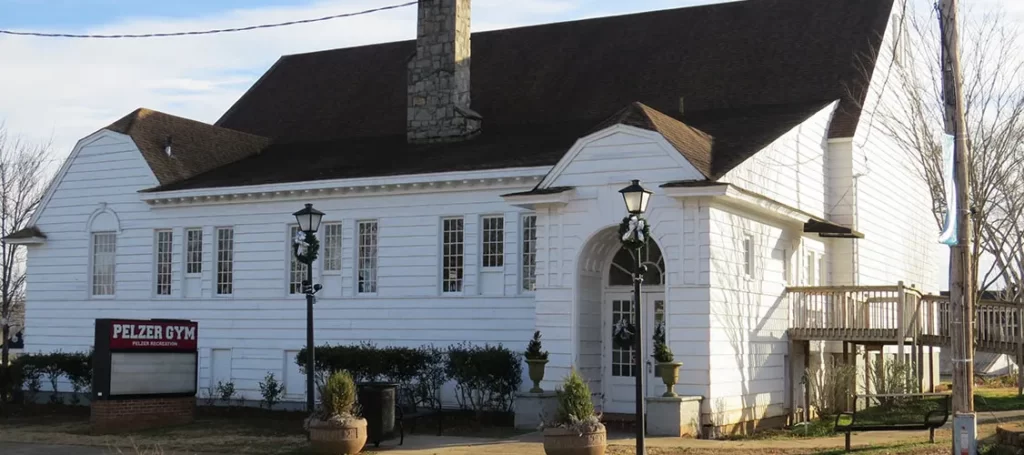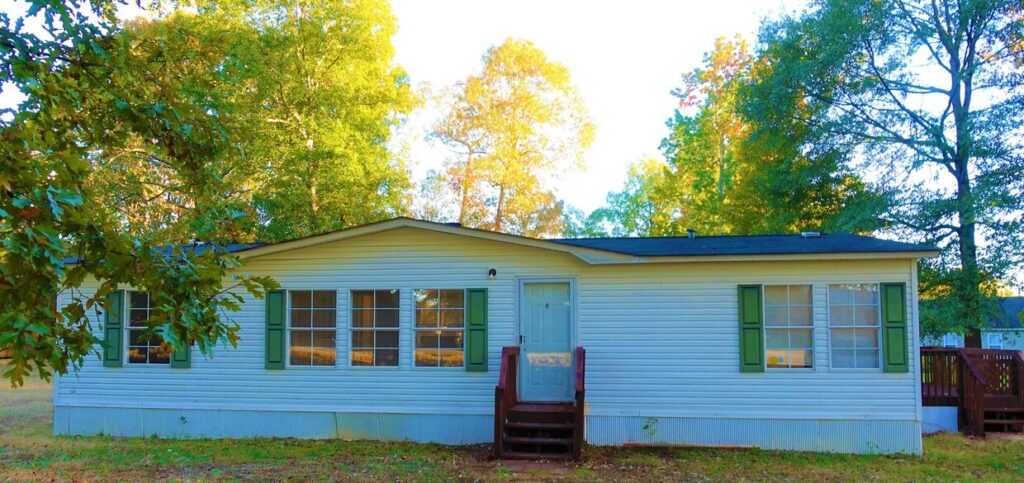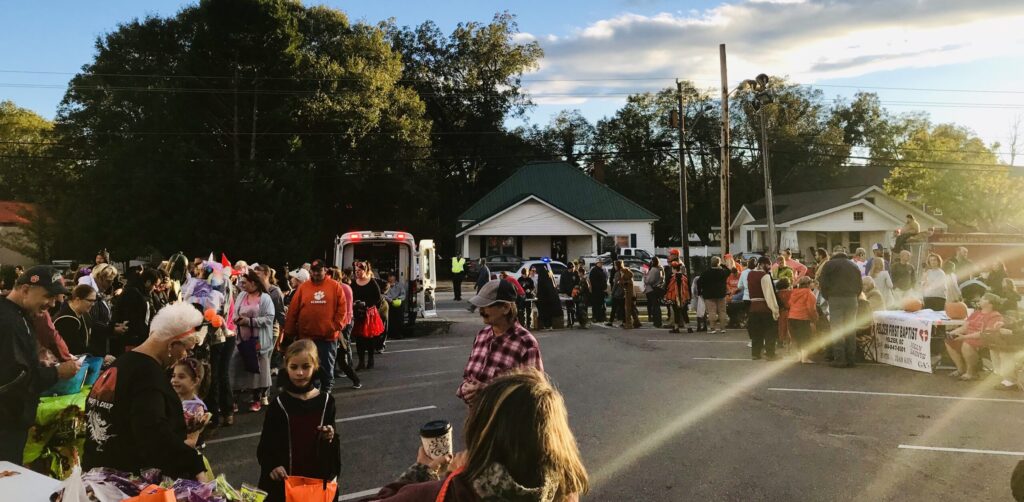HOA Management in Pelzer, SC
Pelzer, South Carolina, is a town in Anderson County. The total area of the town is .97 square miles. The zip code for Pelzer is 29669, and the area code is 864. Pelzer is 17 miles from downtown Greenville. The 2010 U.S. Census population for Pelzer was 89. The U.S. Census population estimate for 2019 was 1,401.
The name of the town, “Pelzer,” derives from the Pelzer Manufacturing Company and the owner, Francis Joseph Pelzer (1826 – 1916). The town was founded between four Pelzer Manufacturing Company mills (the Lower Mills #1, #2, #3, and the Upper Mill #4) located on the Saluda River. The owner of the Pelzer Manufacturing Company, Francis Joseph Pelzer, was a businessman and textile mill owner.
Key Population Points Per the United States Census Bureau for Pelzer
Population per 2010 Census: 89
US Census Population estimate for 2019: 1,401
Median home value 2015-2019: $68,300
Population High school graduate or higher 2015-2019: 78.1%
Pelzer Historical population per the US Census
Census Pop. %±
1950 2,692 —
1970 130 22.6%
2010 89 −8.2%
1980 130 0.0%
1990 81 −37.7%
2000 97 19.8%
2019 1,401 (est.) 1,474.2%
History
Founded in 1670, Charles Town (Charleston) was the first permanent English settlement in South Carolina. Settlers did not start slowly colonizing the backcountry until around the turn of the 18th century. By the mid-18th century, this initial slow trickle of settlers had turned into a waterfall colonizing the backcountry.
The backcountry population increase led to a number of law and order issues. One of these issues being settlers attempting to settle or trespassing in the Cherokee territory. At that time, the Cherokee territory was the upper western part of modern-day South Carolina. Today, the Cherokee territory was where present-day Anderson, Greenville, Oconee, and Pickens counties are located.
The uninvited settlers had been a problem for many years with the Cherokee Indians. The American Revolution was the tipping point with the settlers trespassing on their lands. During the American Revolution, the British made great strides allying with many Native American tribes throughout the American Colonies. Because of these efforts and the settler encroachments, the Cherokee allied with the English Crown against the American Patriots.
This British alliance resulted in the Cherokee and other allying Native American tribes raiding settlements in South Carolina and bordering states in 1776. These raids were brutal, resulting in many settler’s deaths. Many settlers who were not killed outright were tortured to death and scalped.

As a consequence of these Cherokee raids, the state militias and Continental soldiers began retaliatory raids against Cherokee villages and the villages of their allies. Over fifty Indian villages in the region were burned along with any unharvested crops that the Native Americans would need to survive the coming winter. To compound all these tragedies, many of these Native Americans were not involved in the initial raids and were essentially caught in the crossfire.
This conflict became known as the Cherokee War of 1776. The death toll on both sides is unknown, but it is estimated to be in the many hundreds. The war was ended with the Treaty of DeWitt’s Corner in 1777. This treaty signed by the Cherokee Indians and the representatives of the State of South Carolina was punitive towards the Cherokee Nation. One of the most punitive acts of the treaty was the Cherokee being forced to cede their territorial lands in South Carolina. In present-day South Carolina, the Cherokee territory comprised Anderson, Greenville, Oconee, and Pickens counties.
Shortly after the American Revolution, the former Cherokee Indian territory was surveyed into parcels. In 1784, the State of South Carolina began selling these parcels. As settlers moved in and the population increased, the South Carolina General Assembly established Anderson County in 1826.
The naming of Anderson County was in recognition of Robert Anderson (1741 – 1813), a Revolutionary War militia leader. During the Revolution, he fought as a colonel at the Battle of Cowpens, one of the most strategically important battles of the Revolution in the south. Anderson is noted as serving under Continental Army Cavalry Lieutenant Colonel (Future Major General) Henry “Light Horse Harry” Lee during the American Revolution. Because of their fighting abilities, Lee and his cavalry soldiers were a favorite of General George Washington. During the Cherokee War of 1776, Anderson served under General Andrew Pickens with distinction. After the American Revolution, Anderson was promoted to the rank of general in the South Carolina State Militia. After the Revolution, Anderson is one who personally gained from the Treaty of DeWitt’s Corner. He acquired land in the former Cherokee territory totaling 2,100 acres. Anderson’s real estate holdings in the Cherokee territory were vast and were located in present-day Anderson, Oconee, and Pickens counties.
The original settlers of the late 1780s and 1790s to the former Cherokee territory, for the most part, were subsistence farmers. Of course, there were exceptions to this, such as Robert Anderson and General Andrew Pickens (Who Pickens County was named), who both had substantial landing holdings and plantations. Nevertheless, many farmers began to prosper beyond a subsistence basis within the coming decades. The advancement from subsistence to producing cash crops (Cash crops, being crops raised not to consume but to sell) was a combination of improved farming technologies and improved transportation methods.
Without a doubt, the most monumental technological advance during this era was Eli Whitney’s invention of the cotton gin, a patent filed for in 1793. The cotton gin was a machine that separates the cotton fiber from the cottonseed. Before the cotton gin, farmers were limited, for practical reasons, to only growing long-staple cotton. It is much easier to separate the cotton fiber from the seed with the long-staple variety.
The primary drawback with long-staple cotton, for efficient cultivation, it had to be planted in sandy soil, such as what is typically found in coastal regions. Soil conditions in non-coastal regions required those farmers to grow the short-staple cotton variety. Removing the cotton fiber from the seed with the short-staple variety was labor-intensive and extremely tedious. Cultivating short-staple cotton was not profitable, in most circumstances, until the invention of the cotton gin.
Beyond being a profitable cash crop, cotton was an attractive crop for farmers to cultivate for several reasons. It was considered easy to cultivate in the South Carolina upcountry’s soil. Another important factor is the ability to store cotton for an extended period, unlike most crops that spoil unless processed by some method. Probably the most vital to the profitability of cotton is the ability to easily transport this commodity to distant markets.

At the turn of the 19th century, the cotton gin did have a positive economic impact on farming in South Carolina as a whole. However, the farmers in the former Cherokee territory were hindered by the lack of efficient transportation methods that were found in the more eastern areas of the state. As a result, corn and wheat were probably more prevalent crops in the former Cherokee territory. With this being said, cotton cultivation was being undertaken during this period. However, cotton did not make a significant presence until the middle of the 19th century in the former Cherokee territory. This was due to the new markets opened up by the introduction of railroads and a more efficient canal system.
Shortly after the American Civil War, cotton production in South Carolina exceeded pre-hostilities levels. Cotton production increased 45% from 1860 to 1880. This massive cotton production boost was seen in Anderson, Greenville, Oconee, Pickens, and Spartanburg counties. The production increase in the 1880s led to excess supply and lower demand. This saturation of the cotton market led to many farmers losing their farms in the mid to late 1880s. Over a million acres of farmland in 1886 and 1887 was foreclosed on in South Carolina for unpaid taxes.
This saturated cotton market of the 1880s coincided with the textile manufacturing genesis that was occurring in the south during this period. As farms failed, many farmers were leaving their farms to take jobs in the textile mills that were springing up throughout the piedmont of South Carolina. New England and British textile mills were the primary recipients of the south’s cotton production before the Civil War. This domestic and international exporting of cotton all changed in the 1880s with the advent of the more extensive railroad networks and investment capital flooding the south.
In the 1880s into the 20th century, investors were financing textile mills in the south because of the abundant natural resources and cheap labor. These investors also believed moving manufacturing closer to supply and cotton production would improve efficiency. Nevertheless, abundant natural resources such as hydropower to operate the mills and the low-wage workforce were the primary driving force of these investments. These investors were not only profiting from the low-cost energy sources and the cheap labor; during this era, textile manufacturing was going through a technical renaissance. Textile machinery was rapidly advancing with efficiencies that were reducing labor requirements. In addition, during this era, investing in a textile mill or any manufacturing facility was deemed a low-risk investment, and investors were rushing in to help finance.
The town name “Pelzer” was either derived from the Pelzer Manufacturing Company that established the town or from the owner of the company Francis Joseph Pelzer (1826 – 1916). The town was located between four Pelzer Manufacturing Company mills (the Lower Mills #1, #2, #3, and the Upper Mill #4) located on the Saluda River.
Ellison A. Smyth, William Lebby, and Francis J. Pelzer founded Pelzer Manufacturing in 1880. The company purchased a tract of land on the Saluda River in Anderson County, known at the time as Wilson’s Ferry or Wilson’s Bridge. Rail lines for the Columbia and Greenville Railroad ran through the property. In 1881, the company dammed the Saluda River and began construction of their first mill, which would eventually be known as Mill No. 1. This first mill was completed and in operation
Pelzer Manufacturing expanded the mill with the construction of Mill No. 2 in 1885. This expansion with Mill No. 2 was paid for with Mill No. 1’s earnings. This Mill No. 2 addition essentially doubled the manufacturing capacity of the company. The company completed the construction of Mill No. 3 in 1890. Mill No. 3 was constructed adjacent, the east side, to the other two mills. All three mill structures were physically connected.
The success of Pelzer Manufacturing continued, and it was deemed there was more demand for production. In 1894, planning for a fourth mill to expand production was begun. While two of the prior mill’s operations were centered around hydropower and one around steam, technological advances in textile equipment and affordable electrical power made it necessary to seek other options.
Pelzer Manufacturing owned a tract of land along with an old ford in the Saluda River known as Hollands’ Ford that was a potential power site. This site was roughly two and a half miles down the Saluda River. In this era, a power site was a location where energy could be easily harnessed. However, investors and management of Pelzer Manufacturing did not want to construct another mill this far away from the other three mills. This was because of the expense of the additional subsidiary infrastructure that would be required for the new location. Subsidiary infrastructure being churches, schools, employee housing, etc., for the mill workforce. Pelzer eventually had a theater, library, and park. This subsidiary infrastructure was already in place at the location of the first three mills.

At this time, high levels of electricity were not transmitted via power lines over long distances. Pelzer Manufacturing consulted with the premier textile engineering firm in the United States at that time, Lockwood, Greene, and Company, about the feasibility of long-distance electrical transmission.
Engineers from Lockwood, Greene, and Company determined that long-distance electrical transmissions were feasible. A hydroelectric plant and dam were constructed on the power site at Holland’s Ford in 1896. This became known as the Lower Pelzer Hydroelectric Facility and Dam. This power plant is still in operation today. It is the oldest continuously operating alternating current hydroelectric plant in the country. The Lower Pelzer Hydroelectric Facility is also one of the first alternating current hydroelectric power plants to transmit electricity using long-distance overhead lines.
Construction began on Mill No. 4, and it was completed in 1896. This mill was located roughly half a mile north of the other three mills and was called the “Upper Mill” as well as Mill No. 4. The company was the first textile company to purchase and installed Northrop Looms from George Draper and Sons. The Northrop Loom was the first fully automatic power looms. This mill was the first to have General Electric incandescent lighting. When Mill No. 4 was constructed in 1896, it was one of the country’s first electrically driven cotton textile mills. This mill was probably the most modern textile mill in South Carolina, if not the country.
Pelzer came to be known as the “model mill town,” with a reputation of being on the cutting edge of technology for their era. The designs and innovations of the Pelzer mills were used with other mills throughout the south. In 1920, Pelzer was one of the largest mills in the country.
Francis Joseph Pelzer, the company and town namesake, started his business career as a clerk in a cottage brokerage house in 1840. In 1847, Pelzer became a partner in the cottage brokerage house. When the lead partner died in 1867, Pelzer reorganized the firm as Pelzer, Rodgers, and Company. Pelzer invested in other business ventures after he became managing partner of Pelzer, Rodgers, and Company. He became involved in two primary industries in the mid-1860s through the 1890s, mining and textile manufacturing.
Pelzer Manufacturing was established in 1880 with a capital of $400,000. That is $10,556,667 in present-day dollars. The stock and property of Pelzer Manufacturing Company were sold to Lockwood, Greene & Company in 1923 for around $9,000,000. That would be $141,681,579 in present-day dollars.
At the time of this sale, the mills had 3,100 looms and 136,000 spindles. The mills employed more than 2,000 workers.
In 1936, the Kendall Company of Boston purchased all the capital stock of Pelzer mills from Lockwood, Greene & Company. The mills at this time had around 135,000 spindles, and 2,500 looms. The mills employed around 1,300 people. After the acquisition, the Kendall Company modernized certain equipment to improve efficiencies in the manufacturing process.
The Kendall Company, a subsidiary of Colgate-Palmolive Company, sold their baby apparel division which included their Pelzer operation, to Gerber Products Company in 1986. The Kendall Company received $50 million from Gerber for the baby apparel division. The Pelzer mills at this time had 600 to 700 workers.
Gerber Childrenswear closed its knitting and distribution operations in Pelzer in 2003, laying off the last remaining 65 employees.

Many reasons can be cited for the decline of domestic textile manufacturing. Lower cost imports and synthetic fibers were probably the leading cause of the decline in the latter half of the 20th century. The death knell for domestic textile manufacturing was the mutual trade agreement between Canada, Mexico, and the United States, NAFTA. The North American Free Trade Agreement (NAFTA) was ratified in 1993 between all three countries. Even though decreasing employment trends had been occurring in textile manufacturing for some time, NAFTA intensified this fall.
Gerber sold the mill property and structures to a company shortly after the closure. This company deconstructed the structures for salvageable materials and left the rest of the unsalvageable materials in place. Addressing the mess left by this company took a great deal of effort and time.
The town of Pelzer is a good study in small-town survival. The U.S. Census noted at the top of this blog shows the massive decline in population and the resurgence in the last decade. An almost 1,500% population increase in less than a decade. Even with the decrease in the textile industry, the strong economy of the area has improved the economy of Pelzer. The diverse industrial base in the area and the economic development of Greenville have translated into the surrounding suburbs. The Pelzer area has developed into a bedroom community for the Greenville area workforce.
Need Association Management?
Contact Us
How to Start
The Process of Working With Us


REQUEST A PROPOSAL
Request a proposal online or call us directly.


WE WILL REVIEW YOUR CASE
Our team of highly trained professionals will review your case.


RECEIVE A CUSTOM TAILORED PLAN
We will create a customized management plan for your community.


SEAMLESS TRANSITION
We will implement a seamless management transition and integrate our tech.


SIT BACK & RELAX
Enjoy better, affordable and a more reliable, hassle-free management system.




